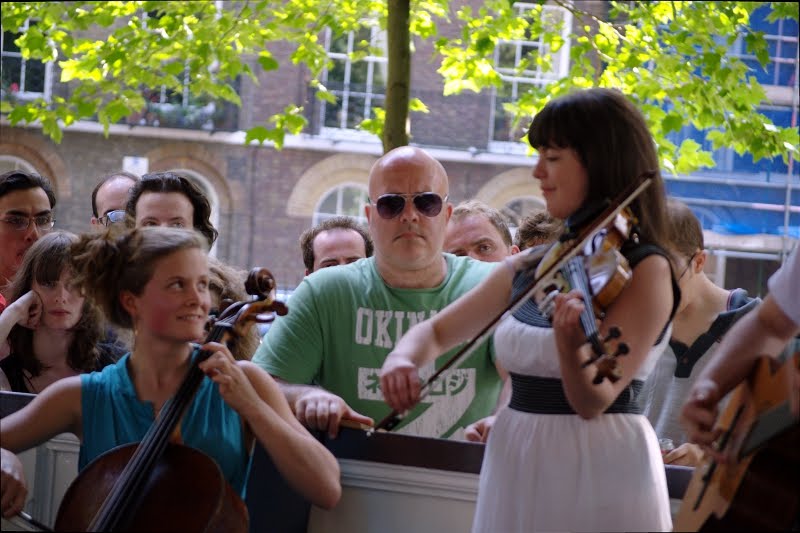
So, the photo above isn't entirely what I mean by lack of focus, but it is an amusing example of getting the focus wrong. Here we see the lovely Emma and Becca from the band Peggy Sue sharing a moment whilst playing. It would have been a fairly nice shot if I could have placed the focus sharply on their faces, whilst throwing the crowd a little bit out of focus to give some separation in the shot. I was shooting fairly wide, at f/4.2 and a focal length of 86mm. An f/2.8 would have given me a really nice separation, but unfortunately I don't have the cash to splash on a 70-200mm f/2.8. The issue with this photograph, then, is wrong focus. I missed the focus on the young women sharing a musical moment, and instead managed to get a picture of a fierce-looking heavy-built man appearing like he's going to scale that barrier and give me a punch on the nose for taking his photo. The reason was that I just wasn't paying attention to my focus points. I had just been taking a photo of the lead singer in the band (her guitar is in the lower right corner) and swung around to see Becca and Emma getting into their groove, and I pressed the shutter release. Oops. I realised at the time that I'd missed the focus, changed the focus point to rest on the closest of the girls*, and snapped again... but by then the moment had passed. A missed photo opportunity. Dangit.

This is more what I'm talking about when I say "lack of focus". What we have here is a fairly reasonable picture of a famous landmark (Canary Wharf in London). It's quite dynamic, due to the radial streaks in the sky. It's quite cold in tone, which echoes the glass and chrome of the buildings, and the water. It's reasonably sharp, too. However, there's no focus to the photograph. There's nowhere for the eye to rest. What should be the focus, the main Canary Wharf tower in the centre, is too small in the frame to have an impact. It is helped slightly by the leading lines of the buildings around it focusing in on the main structure, but there's too much void -- the empty sky, the empty water -- when the building should be dominating.
The moral of this story is, then, to have a strong focal point to your photograph. Often, when you have a wideangle shot like this one, there should be some foreground interest. When you're photographing a building with a wideangle lens, however, it may be better to get in very close to it, making the most of the dramatic converging vertical lines that you'll get in that situation, and making your building fill the frame. When you don't have a wideangle shot, it can be better to place your focus on a line of intersection of thirds -- divide your shot up vertically and horizontally into three equal parts, and where the lines cross towards the four corners of your photograph, these are the "sweet spots" where your subject can sit quite comfortably. This is known as the "rule of thirds", although it should only ever be used as a guide, not as a hard-and-fast rule!
* Just a little tip: I would focus on the closer of the girls because the "region of good focus", let's say, extends more behind the focus point than it does before. As a rule of thumb, when you have your subjects at a range of distances, you should focus about 1/3 of the way into the frame. So I would focus on Emma, the girl on the right, who is slightly in front of Becca, so as to get them both into the region of good focus. If I was to focus on Becca, because the region of good focus extends less towards me, there would be a higher chance then that Emma would be out of focus. I hope that makes sense!
No comments:
Post a Comment